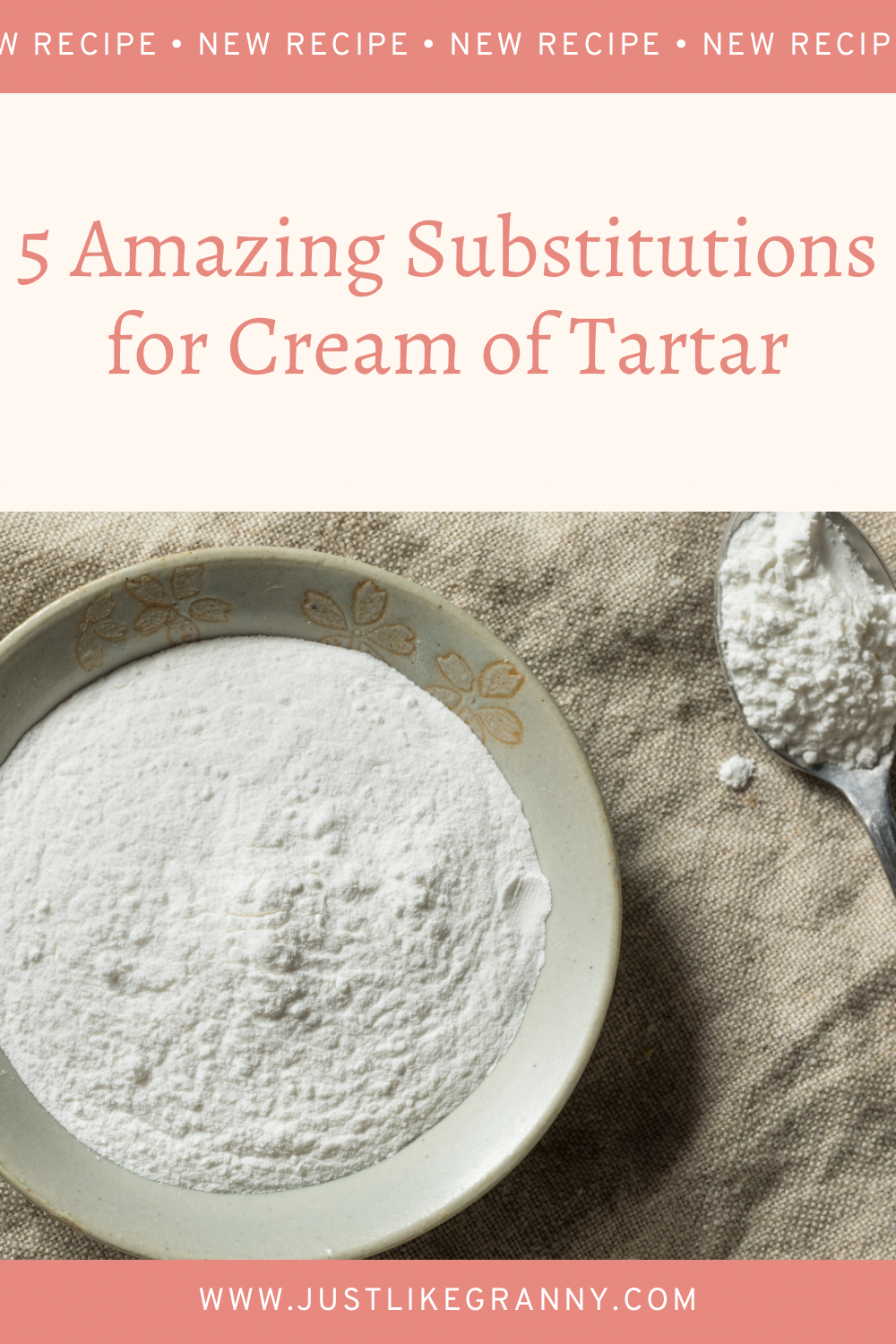5 Surprising Substitutes for Cream of Tartar: A Guide to Baking Without the Essential Ingredient
5 Surprising Alternatives for Cream of Tartar in Baking: A Comprehensive Guide
Cream of tartar, also known as tartaric acid, is a staple ingredient in many baked goods. It acts as a stabilizer, providing structure and stability to recipes such as meringues and whipped cream. However, running out of this essential ingredient can be a problem for many bakers. But don’t worry, there are many substitutions that can be used in its place. In this comprehensive guide, we will go over five surprising alternatives for cream of tartar in baking.
Lemon Juice: Lemon juice is a popular substitute for cream of tartar as it contains similar acidity. When using lemon juice as a substitute, use about two times the amount of lemon juice as cream of tartar called for in the recipe. For example, if the recipe calls for 1 tsp of cream of tartar, use 2 tsp of lemon juice instead.
White Vinegar: White vinegar, like lemon juice, has similar acidity to cream of tartar. Use the same ratio as lemon juice, using two times the amount of white vinegar as cream of tartar called for in the recipe.
Buttermilk: Buttermilk is a great substitute for cream of tartar in recipes that require acidity to activate baking soda. Use the same amount of buttermilk as cream of tartar called for in the recipe.
Yogurt: Yogurt can also be used as a substitute for cream of tartar in recipes that require acidity to activate baking soda. Use the same amount of yogurt as cream of tartar called for in the recipe.
Citric Acid: Citric acid, like cream of tartar, is a strong acid and can be used as a substitute in baking. It can be found in specialty baking stores or online. Use the same amount of citric acid as cream of tartar called for in the recipe.
Cream of Tartar, also known as potassium bitartrate or tartaric acid, is a white, powdery substance that is a byproduct of the wine-making process. It is formed from tartaric acid, which is found in grapes, and is deposited on the inside of wine barrels. This deposit is then harvested and purified to create cream of tartar.
The Secret Ingredient for Perfect Whipped Cream and Baked Goods
In baking, cream of tartar is primarily used as a stabilizing agent. It provides structure and stability to whipped cream, meringues, and other baked goods. It can also be used to make cookies crispier, to prevent sugar from crystalizing in syrups, and to improve the texture of cakes and other baked goods.
When used in combination with baking soda, cream of tartar acts as an acid, reacting with the alkaline baking soda to produce carbon dioxide gas. This reaction is what helps baked goods rise and become fluffy. In whipped cream, cream of tartar helps to stabilize the mixture and prevent the formation of butter.
It is important to note that cream of tartar cannot be substituted with baking powder, as baking powder already contains an acid and baking soda. Instead, it must be replaced with an acid such as lemon juice, white vinegar, or buttermilk.
The Magic of Cream of Tartar: The Ultimate Baking Stabilizer
In summary, cream of tartar is a versatile ingredient that is essential in many baking recipes. It provides stability and structure, helps to control the pH levels of ingredients, and can be used to improve the texture and rise of baked goods.
Here are some alternative substitutes for people with allergies to the common substitutes for cream of tartar:
Apple Cider Vinegar: For people with allergies to white vinegar, apple cider vinegar can be used instead. Use the same ratio as white vinegar, using two times the amount of apple cider vinegar as cream of tartar called for in the recipe.
Rice Vinegar: For people with allergies to white vinegar, rice vinegar can also be used. Use the same ratio as white vinegar, using two times the amount of rice vinegar as cream of tartar called for in the recipe.
Coconut Milk: For people with allergies to dairy products such as buttermilk and yogurt, coconut milk can be used as a substitute. Use the same amount of coconut milk as cream of tartar called for in the recipe.
Almond Milk: For people with allergies to dairy products such as buttermilk and yogurt, almond milk can also be used as a substitute. Use the same amount of almond milk as cream of tartar called for in the recipe.
Baking Powder: For those with allergies to lemon juice, white vinegar, buttermilk, yogurt, or citric acid, baking powder can be used as a substitute for cream of tartar in recipes that require acidity to activate baking soda. Use the same amount of baking powder as cream of tartar called for in the recipe.
Please note that it's important to always consult with a healthcare professional or a licensed allergist to determine if an ingredient is safe for you to consume.
The Must-Have Baking ingredient You've Never Heard Of
Cream of tartar is a staple ingredient in many baked goods, but running out of it doesn’t have to mean the end of your baking adventures. Lemon juice, white vinegar, buttermilk, yogurt, and citric acid are all great alternatives that can be used in its place. When in doubt, use the same amount of substitute as cream of tartar called for in the recipe, or use two times the amount if substituting with lemon juice or white vinegar. Happy baking!


